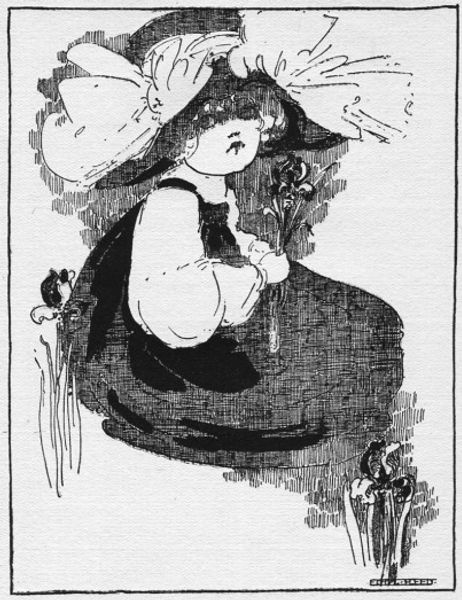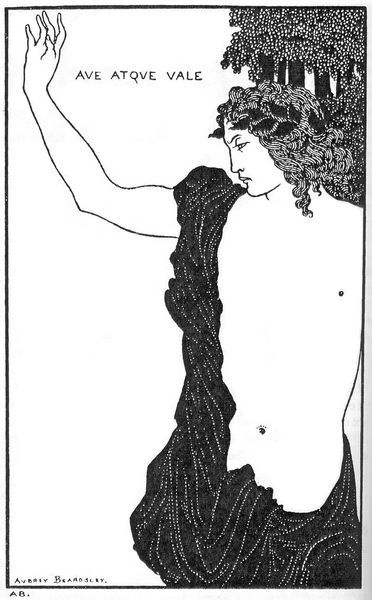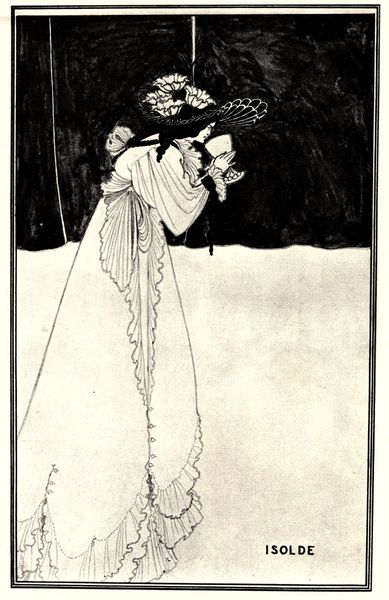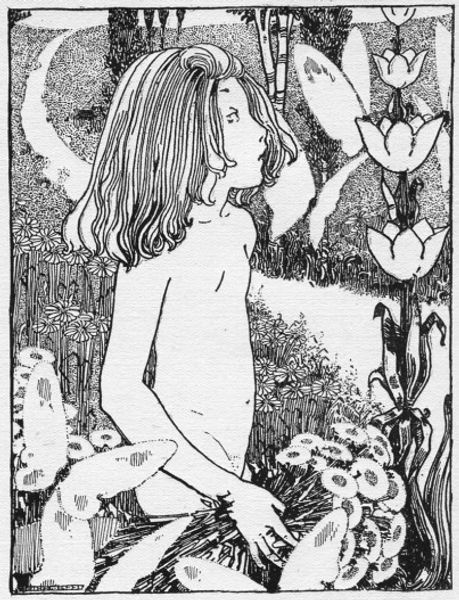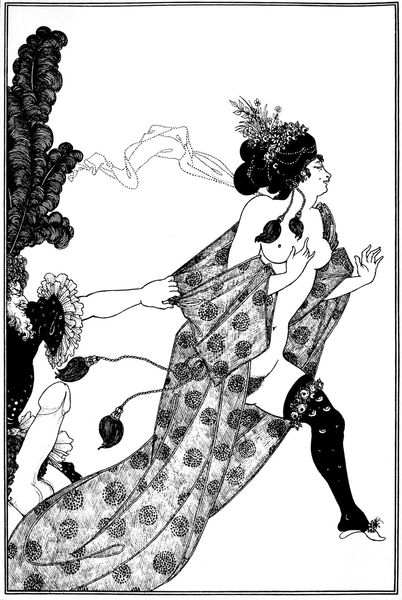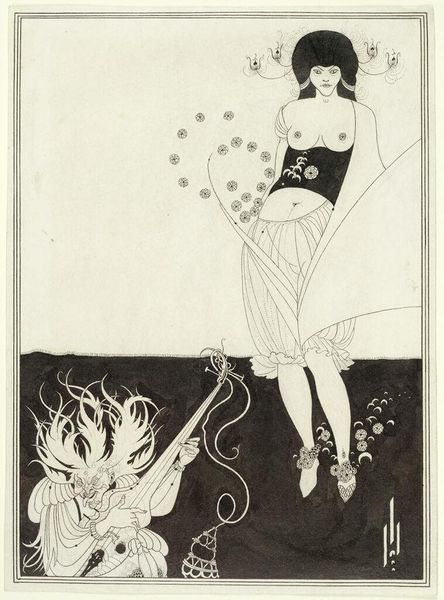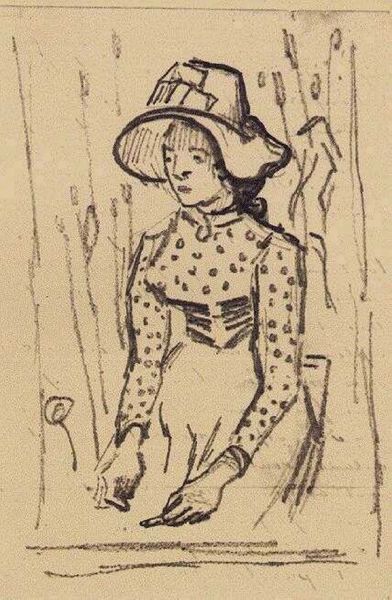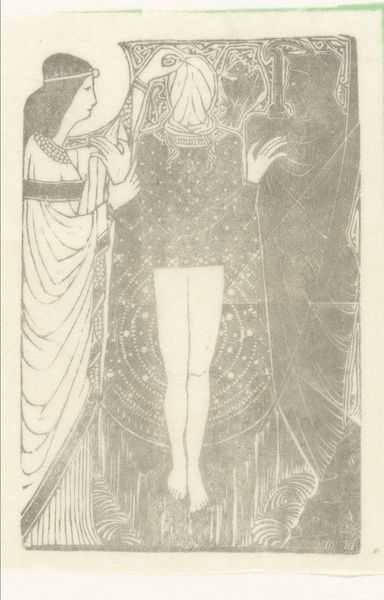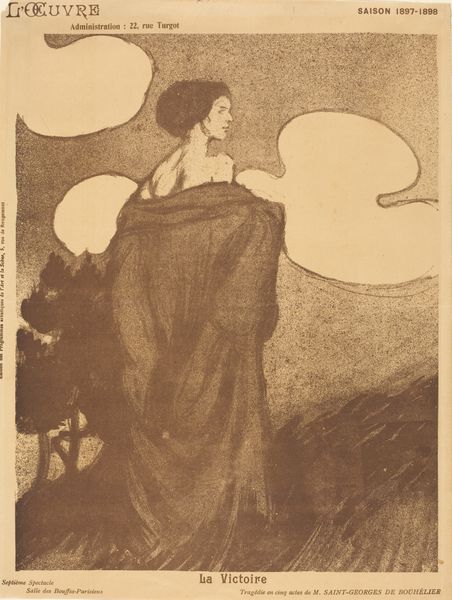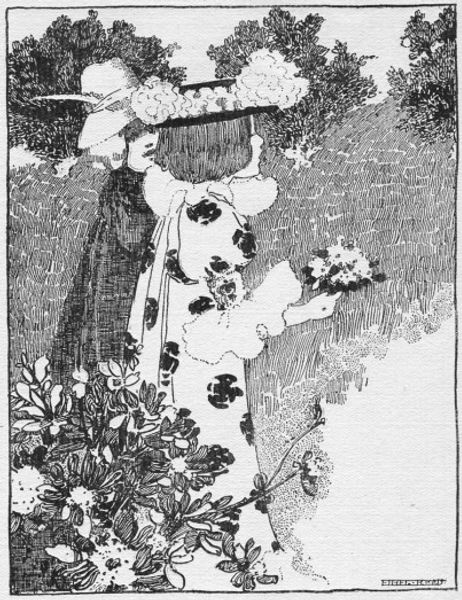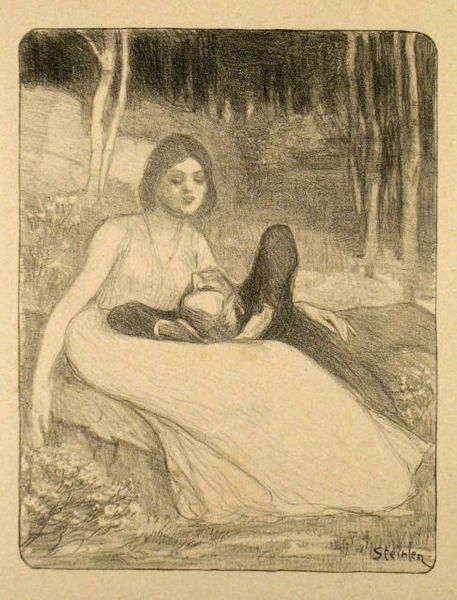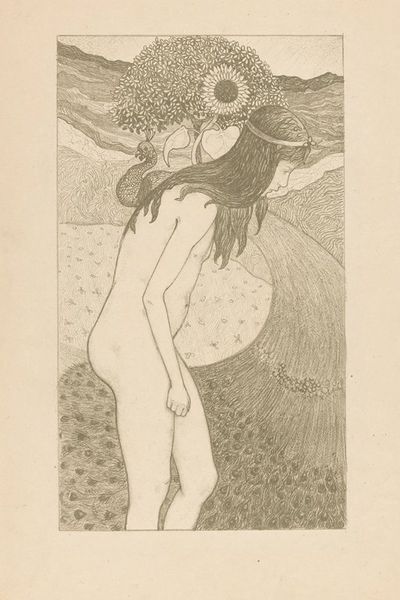
drawing, paper, ink
#
portrait
#
drawing
#
comic strip sketch
#
art-nouveau
#
pen illustration
#
old engraving style
#
landscape
#
figuration
#
paper
#
linework heavy
#
ink
#
sketchwork
#
pen-ink sketch
#
thin linework
#
line
#
symbolism
#
sketchbook drawing
#
storyboard and sketchbook work
#
initial sketch
Copyright: Public domain
Editor: So, here we have Ethel Reed's "Illustration from In Childhoods Country (Moulton)," created in 1895. It's an ink drawing on paper. There's a figure, seemingly a young girl, in a landscape, all rendered with quite detailed linework. What do you see in this piece? Curator: I see a fascinating dialogue between materials and the societal role of women artists at the fin de siècle. Reed, though celebrated, worked primarily in illustration – a commercially viable, arguably "lower" art form. The detailed pen work, almost like engraving, demanded immense labor, challenging notions of artistic genius as effortless creation. Editor: So you’re suggesting the choice of ink and the precise linework speaks to her position as a woman in the art world? Curator: Precisely. Consider the availability and cost of materials. Was ink readily accessible? Did Reed have access to formal training, or was she largely self-taught, making resourceful use of available tools? These questions force us to acknowledge the material conditions shaping her artistic choices. How does this contrast with male artists of the time working with more "noble" media? Editor: That’s a really interesting point. It makes me think about the value we place on certain art forms, like painting versus illustration, and how those value judgments might be gendered. The act of sketching, or using drawing to quickly communicate can allow an artist to test things out without pressure. Curator: Exactly. What is produced in the process of artmaking—drawings, initial sketches—might often be looked over. But as you observe here, the lines in the composition communicate an alternative world of female existence. It suggests artmaking is about exploration of medium and also cultural norms, like art and gender. Editor: I never thought of it quite that way, framing artistic choices in the context of labor and material conditions, but it adds so much to understanding the piece. Thanks! Curator: My pleasure. It's crucial to remember that even seemingly simple sketches hold layers of social and material significance.
Comments
No comments
Be the first to comment and join the conversation on the ultimate creative platform.

